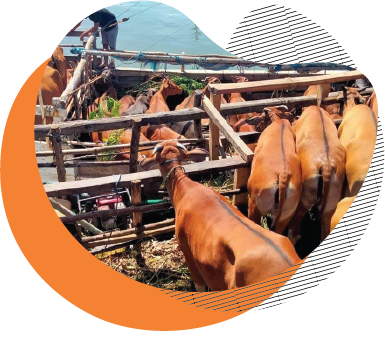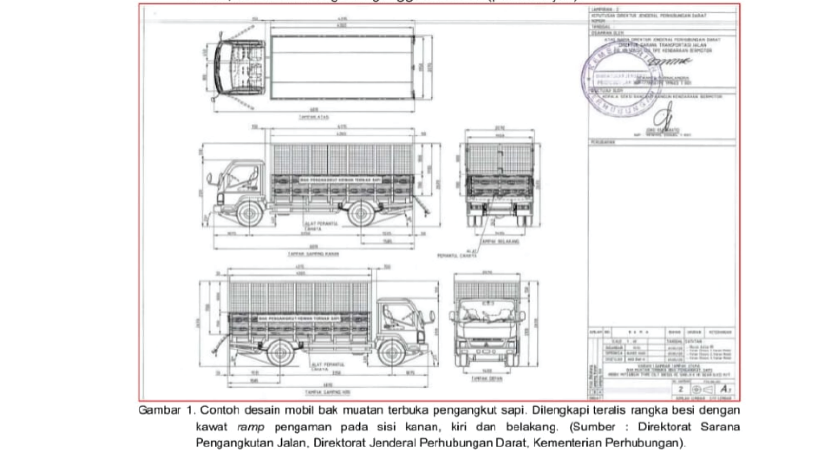
Animal Welfare in Land
Transportation
In Large Ruminants (Cow
and Buffalo)
Animal transportation is carried out by
prioritizing animal welfare principles so that various risks arising from animal transportation activities can be minimized.
By: Drh.Mikeu Paujiah, Dipl.Montessori
Source : Direktorat Kesehatan Masyarakat Veteriner 2020
Photo : https://www.suarantb.com/
Translator : Anjani Setya Utami
Risks arising from transporting animals include the possibility of spreading disease, the risk of weight loss (livestock) due to transport, meat quality, stress levels, wounds/injuries, decreased immune system, illness and death.
Transportation vehicle design. Transportation vehicles for transporting ruminant livestock usually are trucks or pick-ups which are customized to be safe and comfortable for the livestock and driver as well as the environment by paying attention to the principles of animal welfare.

- Transportation vehicles are designed to be safe for livestock and can prevent livestock from possible injury/impairing livestock safety
- The design of the transportation vehicle is adapted to the needs of the livestock, the type There are no protrusions of dangerous objects (for example: nails, wood and similar metal) that could be dangerous for livestockand size of the livestock, and is protected from weather disturbances (heat/rain)
- Transportation vehicle is designed to have sufficient ventilation for air exchange and is
designed to prevent animal limbs from exiting the transport tool.The lighting and ventilation of transportation vehicles must be sufficient and does not
disturb the livestock being transported. Providing additional lights may be needed to
observe animals during transportation in dark/night conditions and is important when
loading/unloading.
- The vehicle floor should be designed to be urine- and feces-proof, have smooth drainage, and does not have holes that could cause feet to fall.
- The vehicle has a good shock absorber against potholes/shake.The top can be equipped with a netting rope to prevent livestock from jumping/running
away.
- The placement of the exhaust pipe in the car does not pollute/leak into animal areas
- The vehicle construction should be easy to clean and protects animals from extreme
temperatures, extreme humidity, rain, hot sun and wind.
- Have sufficient doors for loading/unloading animals
- The vehicle should be equipped with the name of the company/owner, live animal transport

Sumber :
Ma’arif dkk, (2020), Pedoman kesejahteraan hewan dalam pengangkutan hewan, Direktorat Kesehatan Masyarakat Veteriner., Kementerian Pertanian Indonesia.
Download Pdf:
Pedoman kesejahteraan hewan dalam pengangkutan hewan